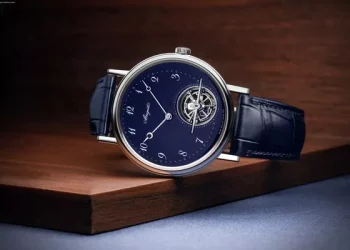Rolex’s Daytona Chronograph is a highly sought-after watch that’s known for its precision, reliability, and style. However, mastering the Daytona Chronograph requires more than just owning one – it takes an understanding of all its features and functions. In this guide, we’ll walk you through how to use your Daytona Chronograph effectively and maintain it properly.
The Design and Features of the Daytona Chronograph
- The History and Design of the Daytona Chronograph
- The Daytona was first introduced in 1963 for professional racing drivers.
- Its design includes three subdials on the watch face for measuring elapsed time.
- The tachymeter scale on the bezel allows for calculating speed over a distance.
- The Movement and Functions of the Daytona Chronograph
- The Daytona uses the Rolex Calibre 4130 movement, which offers exceptional accuracy and reliability.
- The chronograph function allows for timing events up to 12 hours.
- The screw-down chronograph pushers ensure water resistance up to 100 meters.
Setting Up Your Daytona Chronograph
- Winding and Setting the Time
- Before setting the time, wind the watch by gently turning the crown clockwise.
- Pull the crown out to the second position and turn clockwise or counterclockwise to set the time.
- Push the crown back in to the first position to activate the date change function.
- Using the Chronograph Function
- Press the top button to start the chronograph function.
- Press the same button again to stop the chronograph.
- Press the bottom button to reset the chronograph to zero.
Maintaining Your Daytona Chronograph
- Cleaning and Polishing
- Use a soft brush to remove dirt and dust from the case and bracelet.
- Use a microfiber cloth to polish the watch and remove fingerprints.
- For deeper cleaning, use a mild soap and water solution.
- Servicing and Repairing
- Rolex recommends servicing the Daytona every 5-10 years.
- Regular maintenance can prevent costly repairs in the future.
- Only trust authorized Rolex service centers for repair work.
Tips for Owning a Daytona Chronograph
- Wear with Care
- Avoid exposing the watch to extreme temperatures or magnetic fields.
- Remove the watch before engaging in any strenuous activities.
- Be mindful of the watch’s water resistance rating.
- Store Properly
- When not being worn, store the watch in a safe place away from direct sunlight and moisture.
- Keep the watch wound to prevent lubricants from drying out.
- Consider investing in a watch winder for automatic watches.
- Invest in Accessories
- Protect the watch with a high-quality leather or rubber strap.
- Use a watch case or roll to transport the watch while traveling.
- Purchase a loupe for examining the intricate details of the watch.
Advanced Features of the Daytona Chronograph
- Measuring Elapsed Time with the Subdials
- The subdial at the 6 o’clock position measures elapsed seconds.
- The subdial at the 3 o’clock position measures elapsed minutes.
- The subdial at the 9 o’clock position measures elapsed hours.
- Using the Tachymeter Scale
- The tachymeter scale on the bezel allows for calculating speed over a distance.
- Measure the time it takes to travel a fixed distance and read the corresponding speed on the bezel.
- Using the Screw-down Pushers
- The screw-down pushers ensure the watch’s water resistance up to 100 meters.
- To activate the pushers, unscrew them first and then press to start the chronograph function.
In conclusion, mastering the Daytona Chronograph requires an understanding of its design, features, and functions. Setting up the watch correctly and maintaining it properly will ensure its longevity and accuracy. Advanced features such as measuring elapsed time with the subdials, using the tachymeter scale, and the screw-down pushers make the Daytona Chronograph a versatile tool for timing events accurately. By following these tips and investing in accessories, you can keep your Daytona Chronograph in pristine condition and enjoy all its advanced features.
Recommended Readings:





























